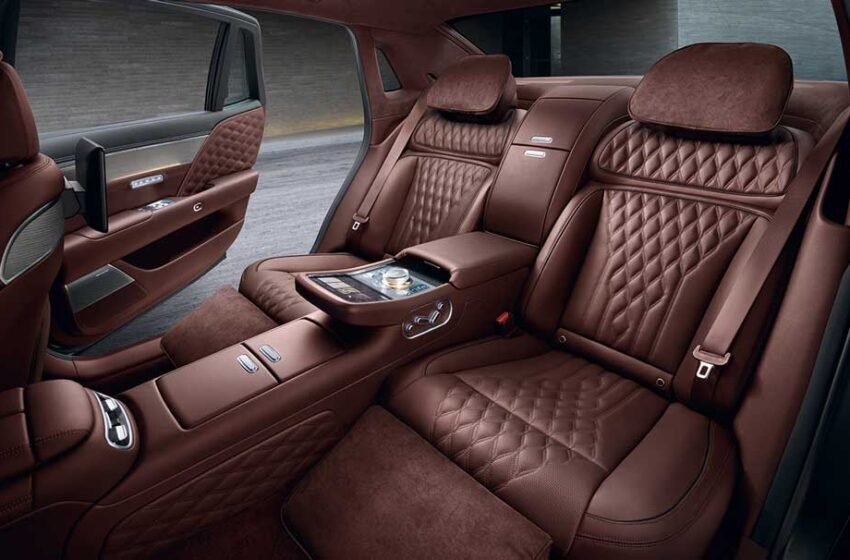Types of Car Interior Material: A Guide to Choosing the Best Options for Comfort and Style

Overview of Car Interior Materials
Car interiors use a variety of materials that affect comfort, style, and durability. Choosing the right material can greatly enhance your driving experience and the look of your vehicle.
Common Types of Materials
You will commonly find materials like leather, vinyl, cloth, and Alcantara in car interiors.
- Leatheris luxurious and durable, making it a popular choice for higher-end vehicles. It offers a premium feel but can be pricey.
- Vinylis a synthetic option that is easy to clean and maintain. It is often used in budget-friendly cars and is available in various styles.
- Clothis breathable and often more affordable. It provides good comfort but may require more upkeep over time.
- Alcantarais a soft material that combines luxury and functionality, frequently used in sports cars.
Each material has its benefits and limits, catering to different preferences.
Factors Influencing Material Choice
When selecting materials for car interiors, comfort, durability, cost, and aesthetics play vital roles.
- Comfortis essential, especially for long drives. Softer materials like Alcantara and premium leather often provide a more comfortable experience.
- Durabilitymatters, especially in regions with extreme weather. Materials like leather and vinyl tend to hold up well against wear and tear.
- Costcan vary widely. While leather is elegant, it may not fit everyone’s budget compared to cloth or vinyl.
- Aestheticsalso matter. You want your car to look good. Some materials offer more color and design options than others.
Understanding these factors helps you make informed choices about the perfect interior for your vehicle.
Leather and Its Alternatives
When choosing car interior materials, your options can greatly affect comfort, style, and maintenance. Leather is a popular choice, but there are several alternatives that can meet different needs and preferences. Here’s a closer look at these options.
Genuine Leather
Genuine leather is prized for its luxurious feel and durability. It is made from animal hides, providing a rich texture that feels high-end. Many luxury cars feature genuine leather upholstery, adding to the overall sophistication.
Caring for genuine leather requires regular cleaning and conditioning. Use a leather cleaner and a soft cloth to keep it looking fresh. Avoid harsh chemicals that can damage the surface. With proper care, genuine leather can last many years, making it a worthwhile investment.
Synthetic Leather
Synthetic leather, also known as artificial leather, is designed to mimic the look and feel of genuine leather but typically at a lower cost. It often has a lower environmental impact during production, making it a sustainable choice for many buyers.
One of the key benefits of synthetic leather is its easy maintenance. You can simply wipe it down with a damp cloth to remove dirt and spills. For those who want the appearance of leather without the high price, synthetic leather is a great alternative.
Faux Leather
Faux leather is another alternative that offers a stylish look. Made from various types of plastic, it’s designed to be animal-friendly and often more affordable than genuine leather. It comes in many colors and textures, allowing for easy personalization of your car’s interior.
While faux leather is easy to clean, it may not be as durable as genuine leather. Over time, it can wear and show signs of damage. Regularly cleaning it and avoiding sharp objects can help prolong its life.
PU Leather
PU leather, or polyurethane leather, is a type of synthetic material. It looks and feels like genuine leather but is usually more budget-friendly. PU leather is popular in car interiors due to its softness and variety.
Caring for PU leather is simple. Use a mild soap and water solution to clean it. It’s important to dry it properly to maintain its appearance. PU leather is resistant to cracking and fading, making it a strong competitor against genuine leather.
Each material has its unique qualities and will appeal to different preferences. Choosing the right one can enhance your driving experience and comfort.
Fabric Materials for Car Interiors
When choosing fabric materials for your car interior, it’s important to consider comfort, durability, and customization. Different types of fabrics offer unique benefits and styles, making it easier to find what suits your needs.
Fabric Upholstery
Fabric upholstery is a popular choice for car interiors due to its softness and comfort. This type of material provides a cozy feel, perfect for long drives.
Many fabric options include cotton blends, polyester, and microfibers. Each blend can offer different levels of durability and texture. For example:
- Cotton Blends:Soft and breathable but might wear out faster.
- Polyester:Strong and resistant to fading, making it great for high-traffic areas.
- Microfiber:Known for its stain resistance and easy maintenance.
Choosing the right fabric upholstery can enhance your driving experience significantly.
Upholstery Fabric
Upholstery fabric refers to the materials used to cover seats and other interior surfaces. It is key to your car’s look and feel.
You might find various options, each with distinct qualities. Here’s a quick look at some popular upholstery fabric choices:
- Nylon:Durable and resistant to wear, often used in sportier models.
- Velvet:Offers a luxurious feel but may require more care.
- Canvas:Highly durable and great for outdoor settings or rugged cars.
Selecting the right upholstery fabric will help you balance style with functionality.
Alcantara
Alcantara is a synthetic material that mimics the feel of suede, providing a luxurious touch to your car interior.
This material stands out for several reasons:
- Comfort:It’s soft and pleasant to the touch, creating a cozy environment inside your vehicle.
- Durability:Alcantara is known for its resilience and resistance to wear, making it ideal for high-use areas.
- Customization:It comes in various colors and finishes, allowing you to personalize your interior.
Many luxury and performance cars use Alcantara to elevate their interior design and appeal.
Textile Options
Textile options refer to the wide range of materials available for car interiors. You can choose from numerous styles that fit your personality and lifestyle.
Common textiles include:
- Cotton:Soft and comfortable but may not hold up as well over time.
- Polyester:Durable and easy to clean, often preferred for family vehicles.
- Synthetic fabrics:Materials like nylon and vinyl are popular for their resistance and style.
Considering your driving habits and aesthetic preferences can help you make the best choice in textiles for your vehicle.
Other Interior Materials
Car interiors often use a variety of materials beyond the typical fabric and leather. Exploring different options can help you find the perfect mix of style and function for your vehicle.
Plastic and PVC
Plastic and PVC are widely used in modern cars. They offer a durable and cost-effective option for various interior parts.
- Durability:Plastic can withstand wear and tear, making it great for high-traffic areas.
- Maintenance:These materials are easy to clean and resist stains.
- Variety:Both plastic and PVC come in many colors and finishes, allowing for customization in your interior design.
Plastic parts often include doors, dashboards, and trims, giving vehicles a sleek look without breaking the bank.
Vinyl Finishes
Vinyl is another popular choice for car interiors. It is versatile and can mimic the look of higher-end materials like leather.
- Comfort:Vinyl provides a soft surface that is comfortable for seating.
- Durability:It resists fading and is water-resistant, which is perfect for everyday use.
- Style Options:Available in different textures and colors, vinyl allows you to match your car’s style.
Vinyl is commonly used in seats, door panels, and other surfaces, giving a modern look without significant expense.
Metal Accents
Metal accents can elevate your car’s interior design. Commonly used materials include aluminum and stainless steel.
- Aesthetics:They add a sleek and modern touch to your interior.
- Durability:Metal is strong and can endure daily wear.
- Variety:You can find metal in trims, knobs, and even some dashboard styles, enhancing your vehicle’s overall appeal.
Using metal accents gives your car a sophisticated feel while ensuring the materials last through years of use.
Functional and Decorative Components
Your car’s interior is not just about looks; it’s about comfort and functionality too. Understanding the types of materials used for different components can help you make informed choices for your vehicle.
Car Upholstery
Car upholstery plays a vital role in creating a comfortable environment inside your vehicle. It directly affects the look and feel of your car’s interior. Common materials used in car upholstery include:
- Nylon: This is durable and resistant to wear. It’s often used in budget-friendly vehicles.
- Vinyl: Easy to clean and maintain, vinyl can imitate leather at a lower cost.
- Faux Leather: This synthetic option mimics the appearance of real leather while being more affordable.
- Leather: Known for its luxury feel and durability, real leather gives a sophisticated look.
Selecting the right upholstery material can enhance your driving experience and add to the vehicle’s aesthetic appeal.
Headliner Fabric
The headliner is the fabric that covers the interior roof of your car. It serves both functional and decorative purposes. Quality headliner fabric can provide insulation, reduce noise, and add style to the interior. Common materials include:
- Fabric: Soft and available in various colors and textures, it adds a cozy feel.
- Foam-Backed Vinyl: This type provides better insulation and is easy to clean.
- Acoustic Headliner Materials: These materials help absorb sound, making your ride quieter.
Choosing the right headliner fabric can improve comfort and enhance the overall look of your car’s interior.
Car Seats
Car seats are one of the most important components in your vehicle, as they directly impact safety and comfort. The materials used for car seats vary widely, offering various benefits:
- Cloth Upholstery: Breathable and comfortable, cloth is often used in mid-range vehicles.
- Leather Seats: Offer luxury and are often found in high-end models. They require more maintenance but can be very durable.
- Synthetic Materials: These choices can mimic leather or fabric while being easier to clean.
When selecting car seats, consider how often you drive, your comfort preferences, and maintenance needs to find the best fit for you.





